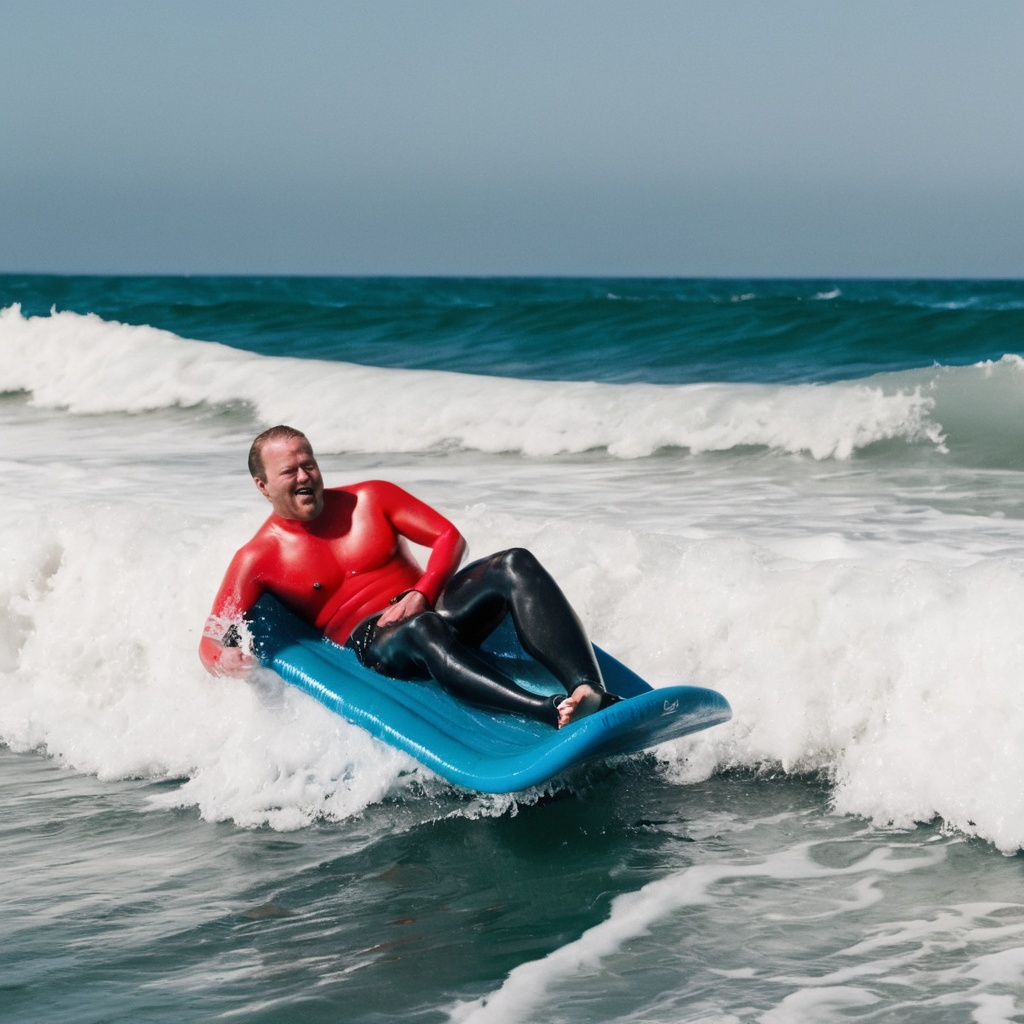
The Thrilling World of Bodyboarding
Bodyboarding is one of the most exhilarating water sports in the world. Known for its accessibility and adrenaline-pumping nature, it has captivated millions globally. The sport, which involves riding a wave using a specially designed board, has roots that go back centuries. Today, bodyboarding thrives as both a recreational activity and a professional sport. In this blog, we will dive into the origins of bodyboarding, its global popularity, how amateurs participate, professional leagues, and its cultural impact. Additionally, we’ll cover the essential rules of the sport. By the end of this post, you will understand why bodyboarding holds such a significant place in the world of water sports.
The Origins and History
The history of bodyboarding can be traced back to ancient Polynesia. Early Hawaiians practiced a form of wave riding called paipo, which involved using small wooden boards. These boards, typically carved from native trees, were ridden by both children and adults. Unlike today’s foam-core boards, paipo boards were rudimentary and lacked the features that make modern bodyboards so versatile.
In the 20th century, bodyboarding began to take its modern shape. Tom Morey, an engineer and surfer, revolutionized the sport in 1971. He introduced the first modern bodyboard, which he called the “Boogie Board.” Made from polyethylene foam, Morey’s invention was lightweight, durable, and affordable. This made wave riding accessible to a broader audience. The design also allowed for better maneuverability and comfort, which appealed to beginners and seasoned surfers alike.
The term “bodyboarding” gained popularity as the sport evolved. In the 1980s and 1990s, professional competitions began to emerge, further solidifying its place in the water sports community. During this period, innovations such as fins, leashes, and advanced board materials enhanced the sport’s technical aspects. These developments helped bodyboarding gain recognition as a legitimate discipline alongside traditional surfing.
The Global Popularity
Bodyboarding is practiced and loved worldwide. Coastal regions with consistent wave activity often serve as hotspots for the sport. While Hawaii is considered the birthplace of modern bodyboarding, other regions have embraced it with equal enthusiasm.
In Australia, bodyboarding enjoys immense popularity. The country’s vast coastline and powerful surf make it an ideal destination for enthusiasts. Beaches like Shark Island and Gold Coast are well-known for hosting bodyboarding events.
South America, particularly Brazil, is another hub for the sport. Brazilian bodyboarders are known for their agility and style, and the country has produced several world champions. The warm waters and vibrant surf culture in Brazil have fueled its rapid growth.
In Europe, countries like Portugal, Spain, and France have thriving bodyboarding communities. Portugal’s Nazaré is famous for its colossal waves, drawing professional athletes and thrill-seekers from around the globe.
In Asia, Japan has a growing bodyboarding scene, with dedicated competitions and training facilities. Even in colder regions like the United Kingdom, enthusiasts brave the chilly waters to ride the waves.
Amateur Bodyboarding: Youth and Schools
Bodyboarding is an excellent sport for beginners, particularly among youth. Many schools and community programs introduce children to bodyboarding as a way to promote physical activity and ocean awareness. Unlike surfing, which requires more balance and technique, bodyboarding allows beginners to catch waves easily. This accessibility makes it an ideal choice for young learners.
In coastal schools, bodyboarding is often included in physical education curriculums. Programs focus on teaching basic skills like paddling, wave selection, and safety protocols. These lessons emphasize respect for the ocean and its ecosystems, fostering environmental consciousness among students.
Youth bodyboarding competitions are also growing in popularity. These events provide a platform for aspiring athletes to showcase their skills. In places like Australia and Brazil, junior leagues are highly competitive, with many participants aspiring to turn professional. Moreover, summer camps dedicated to bodyboarding are common in surf-friendly regions. These camps combine skill development with fun activities, creating a memorable experience for young participants.
Professional Bodyboarding Leagues
Professional bodyboarding has come a long way since its humble beginnings. The Association of Professional Bodyboarding (APB) serves as the sport’s primary governing body. Established in the 1990s, the APB oversees the World Tour, which features competitions at some of the best waves on the planet.
The World Tour consists of multiple events held across different continents. Locations like Pipeline in Hawaii, Arica in Chile, and Itacoatiara in Brazil are iconic stops on the circuit. These competitions attract the best athletes, showcasing high-performance maneuvers and daring wave rides.
In addition to the APB, regional leagues play a crucial role in promoting the sport. In Europe, the European Bodyboarding Association (EBA) organizes events tailored to local talent. Similarly, Australia has its national tour, which features some of the most challenging breaks in the region.
The professional scene is not limited to traditional wave riding. Specialized disciplines, such as dropknee and prone, add variety to competitions. Dropknee bodyboarding, which involves riding with one knee on the board, demands a unique skill set and provides a different visual aesthetic. These variations keep the sport dynamic and exciting for both athletes and spectators.
The Cultural and Social Significance of Bodyboarding
Bodyboarding is more than just a sport; it’s a way of life for many. In coastal communities, it serves as a unifying activity that brings people together. The sport fosters a deep connection with nature, encouraging participants to appreciate and protect marine environments.
Socially, bodyboarding has played a role in breaking barriers. It is often more inclusive than surfing, thanks to its accessibility. Unlike surfing, which can require years to master, bodyboarding allows newcomers to experience the thrill of wave riding almost immediately. This inclusivity has attracted participants from diverse age groups, genders, and backgrounds.
Bodyboarding has also influenced art, music, and fashion. Coastal cultures have embraced the sport’s laid-back vibe, integrating it into their lifestyle. Films and documentaries often feature bodyboarding to highlight the beauty of the ocean and the athleticism of its practitioners.
Politically, the sport has been used as a platform to address environmental issues. Many professional bodyboarders advocate for ocean conservation, using their influence to raise awareness about pollution and climate change. Events and competitions often partner with environmental organizations to promote sustainable practices. This alignment with ecological causes has elevated bodyboarding’s significance beyond recreation.
Rules
Bodyboarding may seem straightforward, but the sport follows specific rules to ensure fairness and safety. Whether competing professionally or riding recreationally, understanding these rules is crucial.
- Wave Priority: In competitive bodyboarding, wave priority determines who has the right to ride a wave. Athletes take turns based on their position in the lineup. Interfering with another rider’s wave can result in penalties.
- Scoring Criteria: Judges evaluate riders based on factors such as wave selection, maneuvers, and execution. High-scoring moves include aerials, barrel rides, and spins. Competitors aim to maximize their points by combining technical skill with style.
- Equipment Standards: Bodyboards must meet specific dimensions and materials depending on the competition. Fins and leashes are also regulated to maintain safety and consistency.
- Safety Regulations: Competitors are required to wear appropriate safety gear, including rash guards and leashes. Lifeguards and rescue teams are present at all professional events to ensure participants’ safety.
- Time Limits: Each heat in a competition has a set time limit, typically ranging from 20 to 30 minutes. Riders must perform their best maneuvers within this timeframe.
- Dropknee and Prone Divisions: Some competitions have separate categories for different riding styles. Dropknee and prone divisions allow athletes to specialize and compete in their preferred discipline.
By adhering to these rules, bodyboarding remains a safe and enjoyable sport for everyone involved.
Conclusion
Bodyboarding is a vibrant and dynamic sport that continues to grow in popularity worldwide. Its rich history, global reach, and accessibility make it appealing to a diverse audience. From ancient Polynesian traditions to modern professional leagues, bodyboarding has evolved while maintaining its core essence—a pure connection to the ocean.
Whether you are a seasoned professional or a curious beginner, it offers something for everyone. It fosters a sense of community, promotes environmental awareness, and provides an unmatched adrenaline rush. With its inclusive nature and ever-growing appeal, bodyboarding is more than just a sport; it’s a celebration of the human spirit and the power of nature.




